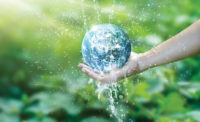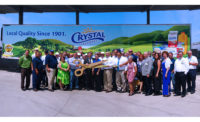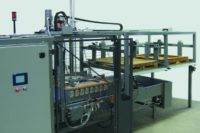How are consumers able to reduce packaging and food waste and further environmental sustainability, and how can CPG companies—especially those in the dairy case—provide solutions for them? A pair of recent reports provides clues.
“Food Packaging Trends US 2016” from Mintel, a market research firm, reveals that 80% of consumers see reducing food waste as equally important with reducing packaging waste, 52% prefer to buy foods with little or no packaging, 81% would choose resealable packaging over non-resealable, and 54% would pay more for resealable or portion-controlled packaging.
“We think that gives brands license to … provide packaging that helps consumers manage food, through resealability, or better portion control,” said John Owen, food and drink analyst for Mintel. “There’s an opportunity to position those packaging advantages as part of the solution to food waste.”
But only 42% of consumers say they recycle packages, 25% say packages don’t always make clear whether their material is recyclable, and only 13% make an effort to avoid purchasing food in packaging that is not recyclable, Mintel reported.
“Not everybody, by a long shot, recycles,” Owen said. “There certainly has been lots of innovation and movement over the last decade or so into new materials and more sustainable packaging.”
Portion control is another issue: To limit food waste, 41% of consumers would pay more for vegetables that come in single-serve packages, and 56% would select a food product based on whether packaging prevented the food from spoiling, Mintel found.
Glass bottles and portion control
Owen sees implications for the dairy industry in a finding about glass packaging, which was seen as more reusable than flexible pouches (49% vs. 11 percent) and more effective at retaining freshness (38% vs. 21 percent). Glass bottles for milk convey quality and provide usability, he said, although from a sustainability standpoint they are considerably heavier and thus less efficient to transport.
On another front, cheese makers have made snacking easier and less prone to food waste by packaging with portion size in mind. Owen offers Stouffer’s mac-and-cheese cups as one example. “People talked about, if it’s just a small size, I don’t need to make a bigger batch, and there’s much less likely to be food waste,” he said. “Allowing you to eat what you need and waste less, that’s an area where dairy could play a role.”
Tetra Pak, a supplier of packaging and equipment used in the dairy industry, wrote a that provides similar feedback about consumers’ interest in renewable packaging. The report is titled “Embracing Value from Natural Capital: Advancing Packaging Solutions that Consumers Want and Companies Can Provide.”
Surveys and conversations with industry leaders and consumers revealed barriers to increased adoption of sustainable measures that included communication gaps, the complexity (real or perceived) around the transformations needed, cost concerns that are also more perception than reality, and the need for consumer education to ensure that they reach a tipping point toward adoption.
“There is a lot of confusion in the marketplace as to what [sustainability] means,” said Elisabeth Comere, director of environment & government affairs for Tetra Pak. “At the end of the day, especially in the packaging sector, renewable technology is something that’s here today and not down the road.”
Looking beyond ROI
The business case for renewable materials is evolving and does not necessarily impede C-level endorsement as long as the transition is done cost effectively, Comere said.
“We also feel we should probably stop trying to look at return-on-investment in the traditional way, but also look at what is the cost to society if we don’t go in this direction?” she said.
Lastly, Comere said, consumer awareness is low but when brought up to speed, most are supportive of sustainability. She expressed the hope that the issue will follow the same gradual path as has awareness of recycling.
“That’s still not perfect but has come a long way,” she said of the latter. “Here we’re at the beginning of an effort [with sustainability] that might take years and years.”
The issue is as relevant to the dairy industry as any, Comere said.
“That industry is a big user of packaging,” she said. “A large share of our customers are dairy customers. We want to make sure that at the end, we deploy innovation for our customers to be able to further promote [sustainability] in their value chain.”
One example relevant to dairy is carton packaging made of 100% renewable materials. Tetra Park has started in that direction with one key customer and hopes to reach that goal by the end of 2016, Comere said.
“The message for the dairy industry is that when we talk about complexity and cost, the point is to focus on here-and-now technologies,” she said. “There are economical, commercially available solutions that can be implemented with almost zero effort.”


